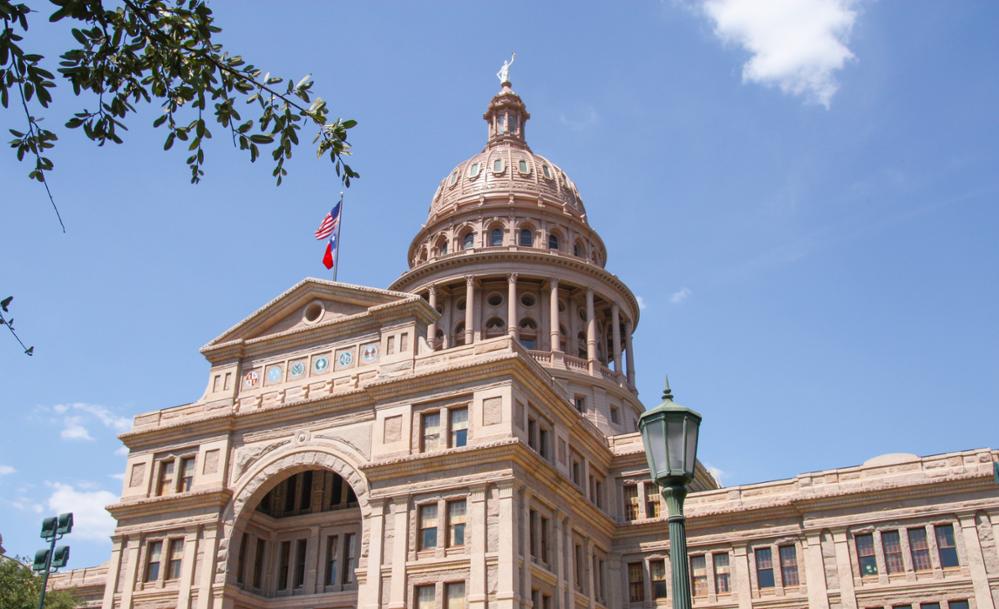88th Legislative Session prioritizes water for Texas Posted on July 12, 2023

The 88th Texas Legislative Session (2023) generated several bills focused on addressing water supply needs and flood mitigation efforts in Texas, as well as the science and planning that contribute. Many of these legislative efforts impact and support the work being done by the Texas Water Development Board (TWDB), the state's water and flood planning, science, and financing agency. Below are regular session highlights that support the TWDB’s vital oversight in ensuring a secure water future for Texas.
Funding for water supply and infrastructure projects
Senate Bill 28 (SB 28) and Senate Joint Resolution 75 (SJR 75) aim to upgrade Texas’ water infrastructure, fund water supply projects, and improve public awareness. The legislation creates two new funds to be administered by the TWDB: the Texas Water Fund (pending voter approval), and the New Water Supply for Texas Fund; and a new account: the Statewide Water Public Awareness Account. The legislative package also directs the TWDB to enhance existing programs, such as the water loss technical assistance program and water conservation efforts.
Subject to voter approval of a constitutional amendment in November, $1 billion will be deposited into the Texas Water Fund to pay for new water projects and infrastructure upgrades and repairs, with a focus on rural communities. In accordance with SB 28, these funds may be used to develop water supply projects that create new water sources in the state, transfer money to certain TWDB financial assistance programs (including the New Water Supply for Texas Fund) and fund a statewide water public awareness program.
Funding for flood projects
In addition to developing Texas’ first-ever regionalized flood planning process, the TWDB administers the Flood Infrastructure Fund (FIF) program that provides financial assistance for flood control, flood mitigation, and drainage projects. Senate Bill 30 (SB 30) provided nearly $625 million in additional project funding to FIF. Additionally, House Bill 1 (HB 1) provided new staff positions and nearly $19.5 million to support flood-related programs.
Funding for low-cost financial assistance programs
With the passage of SB 30, the TWDB will receive $125 million for match funding to leverage an estimated $757 million in federal funds for the Clean Water State Revolving Fund and the Drinking Water State Revolving Fund loan programs. Additionally, the legislation provides more than $4.3 million for new debt service to issue $100 million in financial assistance through the Economically Distressed Areas Program during the 2024-2025 biennium.
Establishing the TexMesonet Hydrometeorology Network as a statewide resource
House Bill 2759 authorizes the TWDB to serve as the lead agency developing the TexMesonet Hydrometeorology Network, a statewide resource for hydrometeorological data and summary information for weather forecasting, flood preparedness, drought monitoring, wildfire management, water resource planning, and similar efforts. The bill requires the TWDB to monitor hydrometeorological conditions and also establishes a TexMesonet Advisory Committee to advise and make recommendations related to the network.
Texas Natural Resources Information System to be renamed the Texas Geographic Information Office
House Bill 2489 renames the Texas Natural Resources Information System (TNRIS), a division of the TWDB, to the Texas Geographic Information Office (TxGIO) to better reflect the current responsibilities of the office. The newly named TxGIO serves as a centralized clearing house for natural resources, census, emergency management, and other socioeconomic data; provides high-quality historical and current geospatial data products; offers education and training; and advances the GIS community in Texas through collaboration, expertise, and cost-sharing initiatives.
Greater assistance to rural communities
To enhance the TWDB’s assistance and outreach to rural communities, Texas lawmakers approved nearly $5 million to the agency and added staff to provide technical assistance to rural entities. The TWDB was given additional authority to provide up to $1.5 million per year in agricultural water conservation loans and grants.
Two related statutory changes redefine “rural political subdivisions” so that TWDB financial assistance programs have a consistent “rural” definition. Senate Bill 469 impacts eligibility for the Rural Water Assistance Fund and State Water Implementation Fund for Texas (SWIFT) target goals, while also informing the agency’s definition of “rural” for other purposes, such as in the State Revolving Funds, SWIFT subsidy levels, and performance measure reporting. House Bill 3582 clarifies the definition of a rural political subdivision for the FIF program, allowing rural areas within urban-adjacent counties to be eligible for FIF grant funds.
Other notable legislative changes include the following:
- Before the legislative session, the TWDB underwent review by the Sunset Advisory Commission, a process through which the Texas Legislature looks closely at the need for and performance of state agencies. Following a report from the Commission, legislators passed HB 1565, commonly known as the “Texas Water Development Board Sunset Bill.” One statutory change granted the TWDB the statutory authority to use a risk-based approach to the review of projects seeking financial assistance. This new authority will allow for better agency resource allocation and a reduction in project review delays.
- The TWDB received more than $1.8 million and new staff positions to support the enhancement and modernization of TWDB data, specifically to expand monitoring of the state's groundwater resources and restructure WaterDataforTexas.org to allow for integrating multiple data viewers and applications.
- The TWDB received nearly $16 million and new staff positions to support the agency's project management and risk mitigation efforts. These resources will be used for a multi-phased project management tracking system, contract management, federal flood mitigation and outreach programs administration, cybersecurity, staff recruitment and retention, and additional office facilities.
- The water supply planning process serves as the foundation of decision-making by regional water planning groups, the TWDB, and policymakers. The TWDB received more than $5.2 million to support sound planning for Texas' water future, including funding for regional water planning grants, and rural and other outreach funds.
This article is posted in Water Planning / Flood / Financial Assistance / Technology / Water Supply / Water Data .